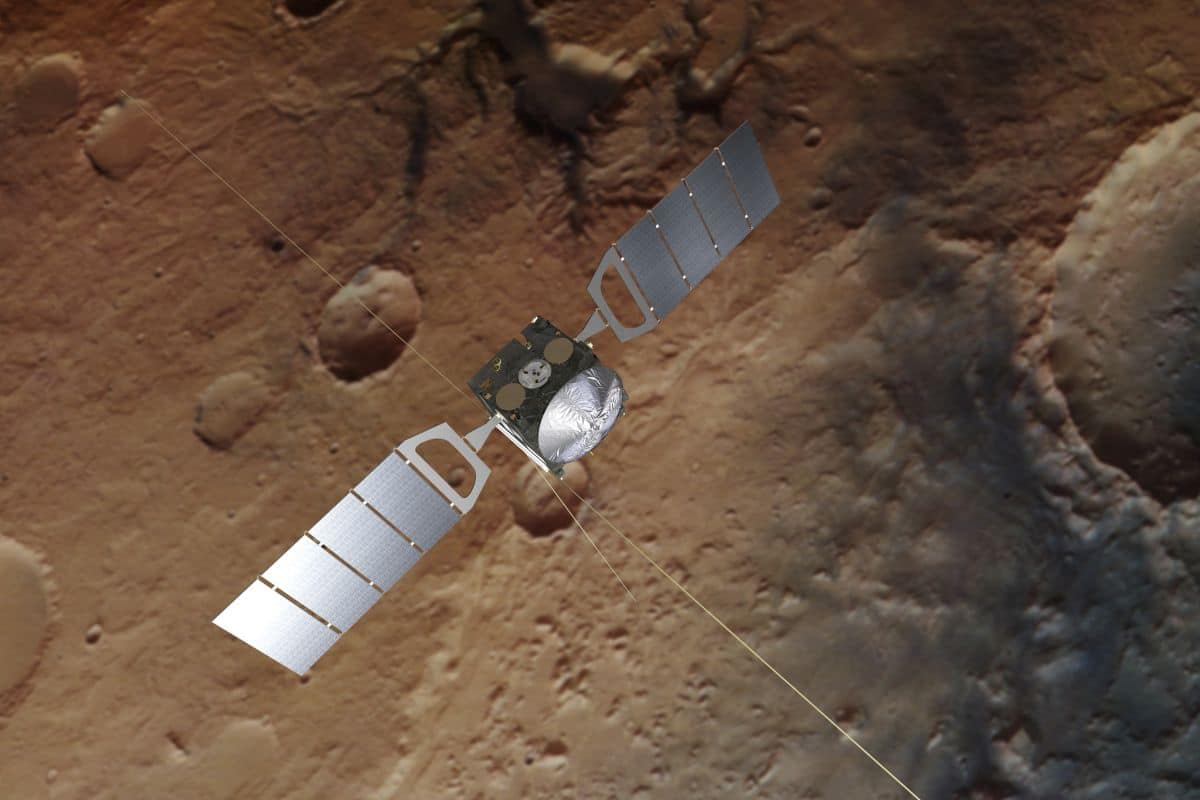

Mars Express’ MARSIS instrument will undergo a major software update that will allow it to peer even better beneath the surface of Mars and its moon Phobos.
It has been nineteen years since Mars Express, an unmanned space mission to the planet Mars, was launched. Meanwhile, the orbiter has been researching our nearest neighbor for nearly two decades and has revolutionized our understanding of the history, present and future of the red planet. One small thing: the software that the Mars Express instruments run on is a bit dated by now. And so, ESA plans to make a series of upgrades that will significantly improve the orbiter’s performance.
MARSIS Instrument
The plan is to update the spacecraft’s MARSIS instrument. This instrument played an important role in the discovery of signs of liquid water on Mars. For example, MARSIS spotted a suspected saltwater reservoir about 20 kilometers wide, buried under 1.5 kilometers of ice in the southern polar region.
MARSIS bombards the Martian surface using a 40-meter antenna with low-frequency radio waves. Most of these radio waves are reflected from the surface. But significant amounts travel through the crust and are reflected off deeper layers made up of various materials, including ice, soil, rock and water. By examining these reflected signals, scientists can map the structure beneath the surface of Mars – down to a depth of several kilometers. In addition, this allows them to study certain properties, such as the thickness and composition of the polar caps and the composition of volcanic and sedimentary rocks.
But the MARSIS instrument could use some attention again after almost twenty years of research. “After years of fruitful science, we want to advance the instrument’s performance,” said Andrea Cicchetti, who leads the software update.
Windows 98
However, that is not yet so simple. “We faced a number of challenges to improve the performance of MARSIS,” adds engineer Carlo Nenna. “Not least because the MARSIS software was originally designed over 20 years ago based on Microsoft Windows 98!”
software update
In short, even on Mars, Windows 98 is now obsolete. And so MARSIS will undergo a major software update. This includes a series of upgrades that will improve signal reception and data processing. This will greatly increase the amount and quality of scientific data sent to Earth. “Previously, we relied on a complex technique that stored a lot of high-resolution data,” explains Cicchetti. “As a result, the internal memory of the instrument quickly became full. But from now on, we can throw away data we don’t need right away. This allows MARSIS to take measurements for five times longer and explore a much larger area in one go.”
Martian South Pole
The software update will allow Mars Express to peer even better beneath the surface of Mars and its moon Phobos. And that’s promising. For example, the team intends to subject the Martian South Pole to another inspection. “Here we have already seen signals pointing to liquid water,” said ESA researcher Colin Wilson. “Thanks to the new software, we can study these regions faster and more extensively in high resolution, in order to confirm whether water can indeed be found. It really is like equipping Mars Express with a brand new instrument after almost 20 years.”
Despite the advanced age of Mars Express, the team believes the orbiter will be around for a while. “Mars Express and MARSIS are still very busy,” said James Godfrey of ESA. “The team did a great job designing the new software. And that allows us to continue to get the most out of this experienced spacecraft.”
Source material:
†Software upgrade for 19-year-old martian water-spotter” – ESA
Image at the top of this article: ESA/ATG media lab; Mars: ESA/DLR/FU Berlin, CC BY-SA 3.0 IGO